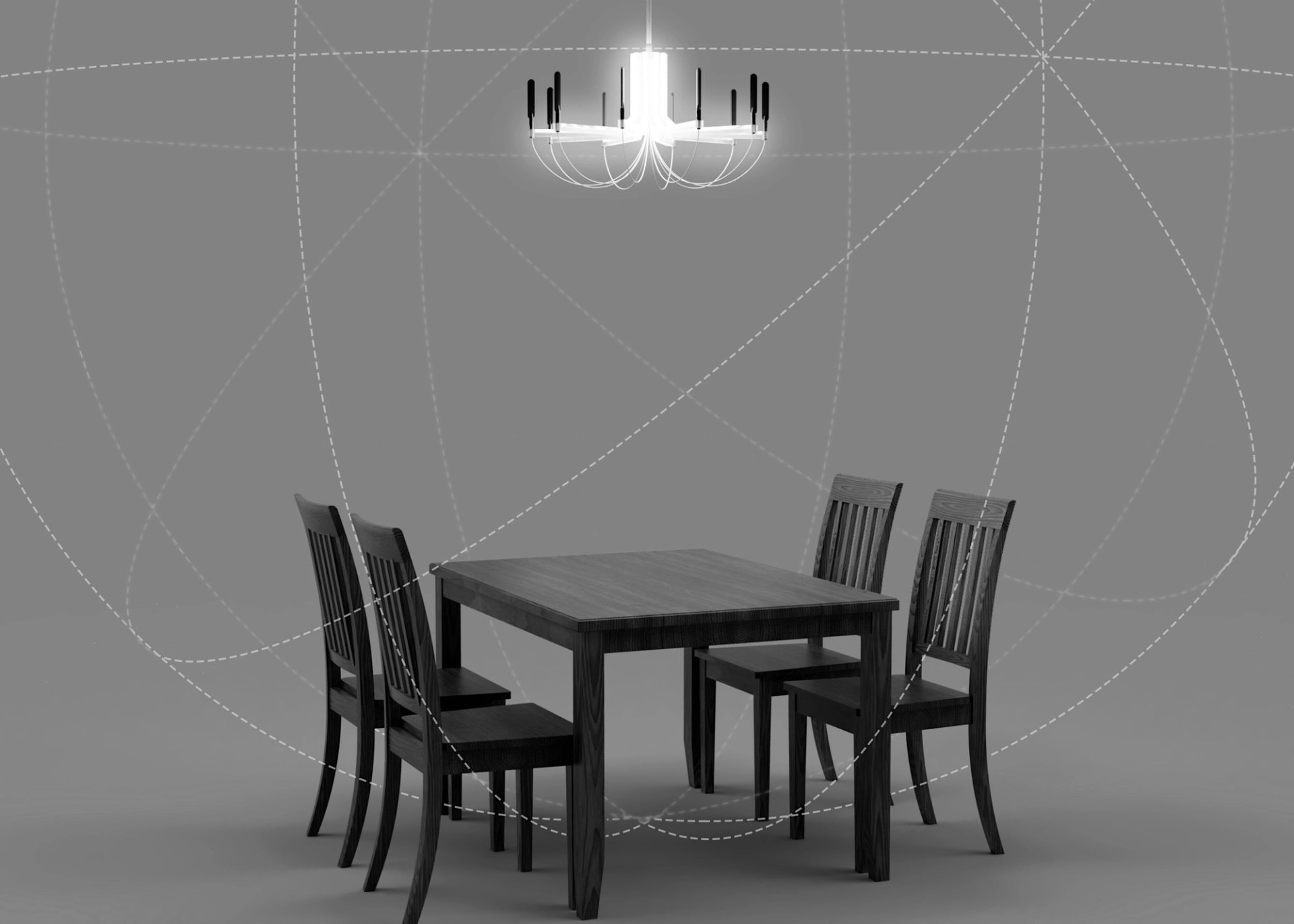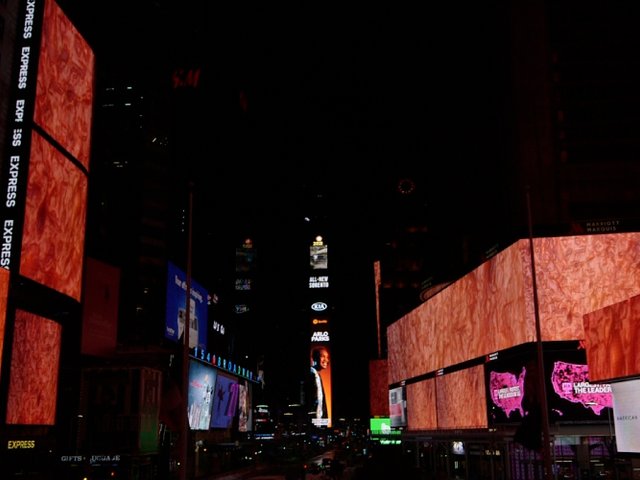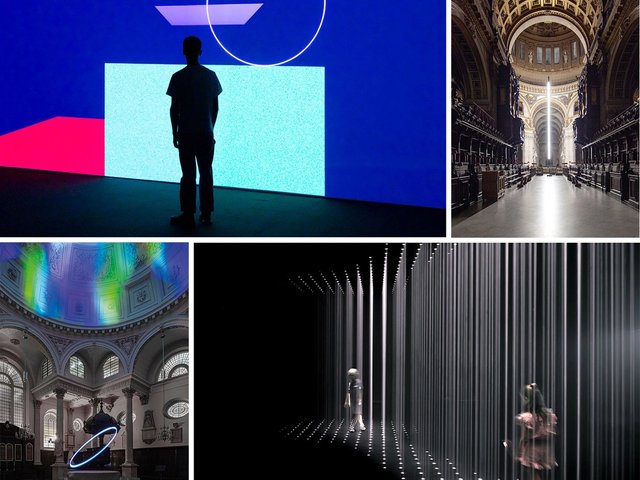The New York-based artists Eric Forman and Ben Luzzatto, with engineer Dan Gross, have designed a signal-jamming chandelier that casts light and creates a cellular- and internet-free zone in the narrow vicinity beneath it. Born in response to our increased reliance on technology, amplified over the last year, the Dis/Connect (2021) chandelier is intended to foster undistracted engagement. The concept also challenges outdated laws against the use of signal-jamming, even in a private setting. Supporting the project, the Brooklyn Law Incubator and Policy Clinic has drafted a petition to the FCC to reconsider its stance and allow for limited use of the technology.
Made of brass, LEDs, and glowing translucent acrylic, the prototype for the chandelier has radio frequency-jamming antennae attached visibly beneath each arm. The concept was awarded Honorable Mention in the Arts and Design category of Fast Company’s 2021 World Changing Ideas Awards.
The goal of the design is to encourage interpersonal connections and promote mental health. Forman explained, “To be wholly present with ourselves and each other, we must design new tools to create spaces of digital quiet in our homes. It’s not that we can’t turn our phones off, it’s that we don’t—they are too addictive.”
Putting the concept to use will require changes in current regulations, which are in place in part to protect emergency communications. Arguing the benefits of limited, consensual use, the team points to the advanced technology of the design, which casts a specific, targeted jamming radius—think a more functional "Cone of Silence"—as opposed to the indiscriminate range of existing technology.

Dis/Connect casts a specific, targeted jamming radius as opposed to the indiscriminate range of existing technology Rendering courtesy of Eric Forman Studio
Jonathan Askin, the founder of Brooklyn Law Incubator and Policy Clinic, says that his team, “has provided legal, regulatory, and policy support to Dis/Connect in its crafting of vital arguments to advance mental health and privacy in a world of ever-increasing ubiquitous, inescapable, always-on mobile communications.”
"One of the main purposes of design and art is to respond critically to changes in culture that result from the introduction of new technologies,” Luzzatto adds. “Ultimately, we the people need to be in control of the technology we use, not the other way around. If enough people respond to those design innovations, laws can be changed to accommodate them, even in the face of business interests that want things to remain as they are.”
With a petition ready to file, the artists are working on additional prototypes as they seek gallery and investor support. They intend the chandelier to be part of a larger Dis/Connect series, which could include additional lighting and sculptural objects.




